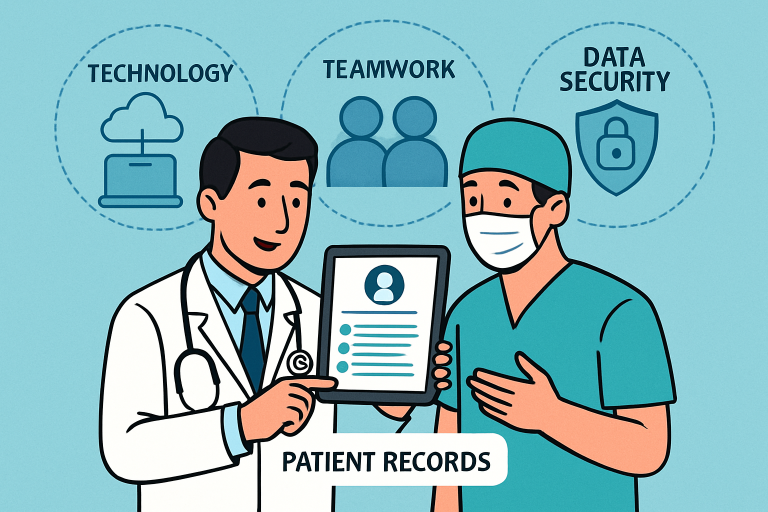The Changing Landscape of Medical Risk
Medical risk management is entering a period of rapid transformation, driven by changing healthcare policies, technological advancement, and evolving patient demographics. Today’s physicians and surgeons navigate risks not just within surgical suites, but within digital networks, through virtual appointments, and across a shifting regulatory environment. With new developments and potential liabilities emerging regularly, physicians turn to expert providers, such as Coverys malpractice insurance for physicians to safeguard their practices with comprehensive risk solutions tailored to modern threats.
As the healthcare ecosystem evolves, clinicians must adopt adaptive and informed techniques to mitigate risk while maintaining exceptional patient care.
Healthcare Policy: A Moving Target
Ongoing updates in healthcare legislation and regulation directly shape how risk is understood and managed in clinical practice. As highlighted by the Journal of the American Medical Association, critical topics such as liability, reimbursement, and compliance dominate the attention of risk managers and clinicians alike. Regulatory shifts can quickly alter the legal landscape, influencing everything from malpractice premiums to documentation standards and patient consent requirements.
To effectively navigate these changes, physicians and surgeons are investing in robust training and policy reviews. Remaining informed about emerging regulations ensures compliance, minimizing errors, and supporting both patient safety and organizational resilience.
The Role of Digital Transformation
Digital technology has revolutionized the healthcare sector. Electronic health records (EHRs) now play a central role in documentation and case management. Modern EHR systems streamline workflows, reduce redundancies, and, when properly implemented, help providers avoid documentation errors. Recent studies published by HealthIT.gov confirm that EHRs have contributed to measurable improvements in overall patient safety. However, they also present new vulnerabilities, such as data privacy concerns and the risk of cyberattacks, making it essential for organizations to establish robust security measures and staff training protocols.
Data-Driven Decision Making
Harnessing the power of clinical and risk analytics allows healthcare organizations to shape their protocols based on experience and emerging trends. Analyzing patterns in malpractice claims, adverse events, and near-miss incidents enables clinicians to adjust procedures to address frequent failure points. According to the American Medical Association, claim frequency and types differ by specialty, reinforcing the need for specialty-specific risk management strategies.
Implementing targeted training programs based on analytical insights can further reduce errors and improve patient safety. Additionally, real-time data monitoring helps catch potential issues before they escalate, ensuring timely intervention. Facilities that prioritize analytics-driven risk management often experience lower incident rates and improved overall quality of care. Embracing these data-driven approaches is crucial for maintaining compliance and public trust.
Emphasizing Education and Collaboration
The most successful organizations foster a culture of continuous learning and open communication between team members. Routine training, simulation exercises, and interdisciplinary workshops keep staff sharp and responsive. Cultivating shared accountability lowers rates of preventable errors and fosters strong patient relationships, a trend supported by numerous patient experience studies. Interprofessional collaboration ensures that every member of the healthcare team is involved in identifying and mitigating risks, creating a safety net that benefits both practitioners and patients. When team members communicate openly and share information effectively, the likelihood of misunderstandings decreases significantly. This collaborative approach also enhances the overall quality of care, resulting in improved health outcomes for patients. Moreover, it encourages a culture of continuous improvement, where feedback is valued and used to refine practices.
Technological Tools: A Double-Edged Sword
Innovative tools, including telemedicine platforms, AI-powered diagnostic support, and remote patient monitoring, are transforming care delivery. These advances improve access and efficiency, but introduce novel risk considerations. For example, telemedicine helps physicians reach underserved populations, but it can also complicate continuity of care and data privacy. Similarly, AI improves diagnostic accuracy but must be validated and continuously monitored to avoid systematic errors or biases. Additionally, integrating these technologies requires careful training and adaptation by healthcare providers to ensure optimal patient outcomes. Furthermore, ongoing regulatory updates are essential to keep pace with technological advancements and safeguard patient rights.
Strategies for Proactive Risk Management
Incident Reporting
Organizations should foster a non-punitive atmosphere where incidents and near-misses are treated as learning opportunities rather than grounds for punishment. This approach encourages transparency, facilitates root cause analysis, and leads to more effective interventions.
Policy Updates
Regular reviews and updates of clinical protocols ensure compliance with current best practices and legal regulations. This dynamic approach enables practices to adapt quickly to new standards and recommendations as they arise.
Patient Communication
Effective, compassionate communication between clinicians and patients builds trust and reduces misunderstandings that can lead to claims or complaints. Informed consent, shared decision-making, and open dialogue remain cornerstones of safe practice.
Invest in Training
Simulation-based education, real-world case reviews, and ongoing professional development enable healthcare teams to anticipate and manage emerging risks. Teams well-versed in up-to-date techniques are better prepared for complex scenarios and less likely to encounter preventable adverse events.
Looking Ahead: What Physicians and Surgeons Need to Know
The future of medical risk management will demand flexibility, vigilance, and continual adaptation as patient expectations, technology, and policy frameworks evolve. Advances such as telehealth and AI present new opportunities for enhanced care, but also introduce the need for new security measures, validation systems, and interdisciplinary policies. Embracing these changes through comprehensive risk programs, smart analytics, and collaborative strategies empowers physicians and surgeons to deliver safer, higher-quality care. Staying informed and leveraging expert resources enables clinicians to turn risk management into a strategic advantage, protecting their practices in an increasingly dynamic healthcare environment.





Leave a Reply